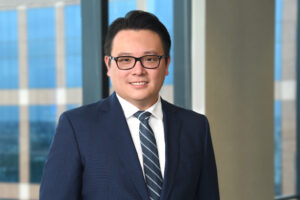Other Available Languages:
August 2020 Federal Circuit Newsletter (Japanese)
August 2020 Federal Circuit Newsletter (Chinese)
Claims Covering Human Engineering That Exploit a Naturally-Occurring Phenomenon Are Patent Eligible
In Illumina, Inc. V. Ariosa Diagnostics, Inc., Appeal No. 19-1419, the Federal Circuit modified its earlier decision and clarified the difference between a natural phenomenon and human engineering.
Illumina sued Ariosa Diagnostics for patent infringement on methods of extracting fetal DNA from blood, based on the size difference between fetal DNA and maternal DNA. The Northern District of California held that Illumina’s patents were invalid under 35 U.S.C. § 101 as being directed to a natural phenomenon. The Federal Circuit reversed, finding that Illumina’s patents were directed to patent-eligible subject matter. Ariosa petitioned for rehearing. In this modified opinion the Federal Circuit acknowledged the natural phenomenon that fetal DNA is generally shorter than maternal DNA. But the court explained that Illumina’s claimed size thresholds that assist in differentiating the two are human-engineered. The claims at issue did not cover a method that analyzes the natural size disparity between fetal and maternal DNA, but rather exploits this disparity to separate the two.
Judge Reyna dissented.
Limiting Terms in Preamble May Render Entire Preamble Limiting
In Bio-Rad Laboratories, Inc. V. 10x Genomics Inc., Appeal No. 19-2255, the Federal Circuit held that where elements of preamble are limiting, indivisible terms in the remainder of the preamble are also limiting; under balance of hardships analysis a permanent injunction should not extend to products for which there are no non-infringing alternatives.
Bio-Rad sued 10X for infringing three patents covering systems for forming microscopic fluid droplets for medical diagnostics and screening. A jury found 10X liable for willful infringement. The district court denied 10X’s JMOL motion of noninfringement and granted Bio-Rad’s motion for a permanent injunction.
On appeal, 10X argued that for two of three patents, the district court misconstrued the independent claims by failing to find the preambles limiting. The district court found some preamble terms provided an antecedent basis for use of those terms in the body of the claim, but that did not convert the entire preamble into a limitation. The Federal Circuit disagreed. It determined the preamble could not be neatly divided into separate portions and the preamble must be read together as a whole. It held the district court erred in giving limiting effect to certain terms in the preamble, but not to other terms surrounding those limiting parts. The Federal Circuit remanded for a new infringement determination considering the preamble as a whole as limiting the scope of the claims.
10X also challenged the scope of the permanent injunction. The district court determined that the hardship to 10X was mitigated because it could still generally sell non-infringing alternative systems for some, but not all of the enjoined systems. The Federal Circuit evaluated 10X’s hardship product-by-product, and vacated the injunction for two of five product lines because those products had no non-infringing alternatives.
Essentially Standard Questions of Fact
In Godo Kaisha Ip Bridge 1 V. Tcl Commc’n Tech. Holdings Ltd., Appeal No. 19-2215, addressed whether a patent is essential to a technical standard is a question of fact for the jury.
Godo Kaisha sued TCL for infringement of two patents covering aspects of the LTE mobile communications standard. At trial, Godo Kaisha asserted that TCL’s products infringed the patents because (1) the patents’ claims were essential to mandatory aspects of the LTE standard; and (2) TCL’s products practiced the LTE standard. The jury found TCL infringed Godo Kaisha’s patents and awarded damages. After trial, TCL filed a renewed motion for judgment as a matter of law asserting that the question of whether a patent was essential to a standard should be decided only by the court during claim construction. The district court denied the motion and TCL appealed.
The Federal Circuit affirmed. The Federal Circuit acknowledged there was an open question as to whether the jury, or the court as part of claim construction, should determine whether a patent’s claims are essential to a standard. However, prior precedent contemplated parties proving the question as a factual matter. See, e.g., Fujitsu Ltd. v. Netgear, Inc., 620 F.3d 1321, 1327 (Fed. Cir. 2010) (“An accused infringer is free to … prove that the claims do not cover all implementations of the standard”). References to claim construction in precedent were “simply a recognition that the first step in any infringement analysis is claim construction.” Thus, the Federal Circuit held the question of whether a patent was essential to a standard was properly decided by the jury.
Imaginary Slice of Accused Product Failed to Satisfy Structural Claim Limitation
In Neville V. Foundation Constructors, Inc., Appeal No. 20-1132, the Federal Circuit affirmed a construction of “end plate” that required a flat external surface, and therefore precluded an infringement theory in which the “end plate” was an imaginary slice inside the accused product.
Plaintiffs Steve Neville, Substructure Support, Inc., and TDP Support, Inc. (collectively, “Substructure”) sued Foundation Constructors, Inc. and Foundation Pile, Inc. (collectively, “Foundation”) alleging infringement of two patents relating to “foundation piles.” Foundation piles are “tubular structures placed into the ground” to provide support for foundations built over them. The patent claims recited tubular piles with screw-shaped pile tips. The district court granted summary judgment of non-infringement based in part on its construction of the phrase “end plate having a substantially flat surface.” The figure below, submitted by Substructure’s expert, shows the alleged “end plate” in Foundation’s accused pile tip.

Substructure alleged that the highlighted region of the accused pile tip was an “end plate,” having two substantially flat surfaces—one facing the interior of the pile tip and another that interfaces with the point shaft. The district court rejected this theory because it found that the plain meaning of “end plate having a substantially flat surface” did not encompass an interior surface within the pile tip. Substructure appealed.
The Federal Circuit explained that the word “end” itself suggests that the relevant surface of the end plate is an external part of the pile tip. The specification and prosecution history also supported the district court’s construction. Thus, the Federal Circuit affirmed the grant of summary judgment.

